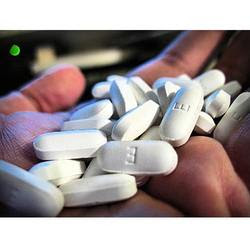
By the force opioid analgesics share a (relatively) to:
• «weak" - hydrocodone, propoxyphene, tramadol, codeine and drugs containing a combination (used to treat the pain of medium intensity);
• «strong" - morphine, fentanyl, methadone, oxycodone, hydromorphone, etc. (used to treat severe pain).
All * (except tramadol) opioid agonists evaluated as a potentially dangerous medications and drugs, as have the ability (to varying degree) to cause physical and psychological dependence, that is, have narkogenny potential.
Tramadol stands out among all members of opioids (agonists), because unlike them he has a very low narcotic potential (and does not belong to a drug) that is confirmed by extensive clinical experience of its use worldwide, and special research. Tramadol is counted among the strong agents and written on prescription form for the potent substances
Physical dependence (and tolerance) and are a natural and predictable reaction of the organism can be considered as a state of adaptation (adaptation) of the organism to long-term effect of opioid analgesics. The most serious challenge to the use of opioids is the development of addictive behavior - addiction or psychological dependence. The development of psychological dependence, unlike tolerance and physical dependence, the effect of opioids is unpredictable and manifests itself in a greater degree, as mentioned above, patients with unfavorable genetic and psychosocial background.

No comments:
Post a Comment